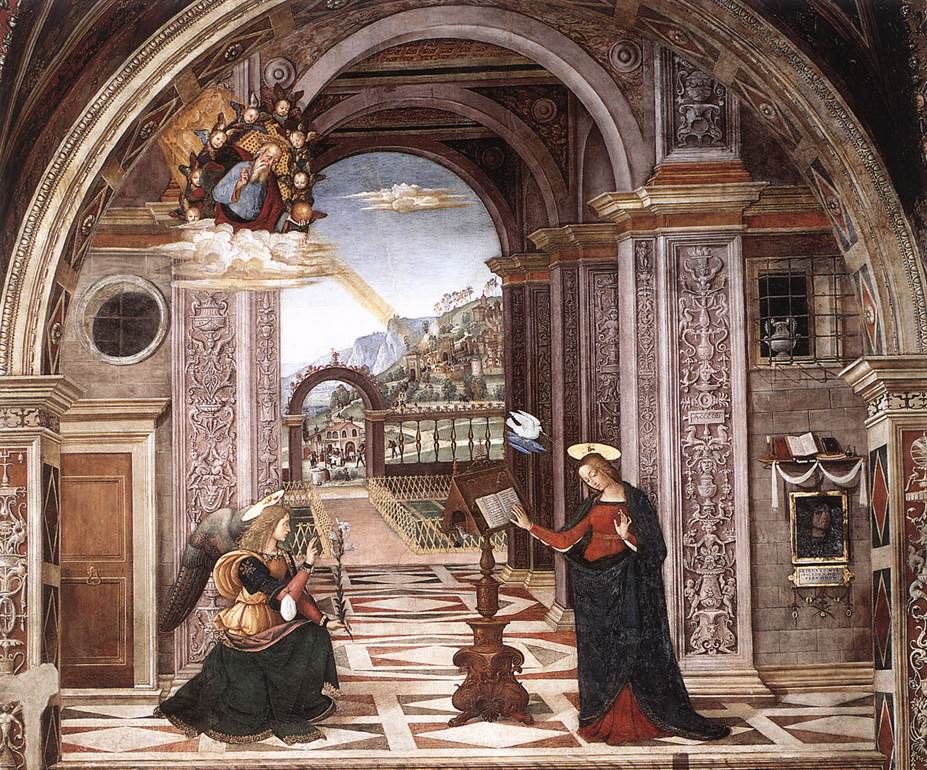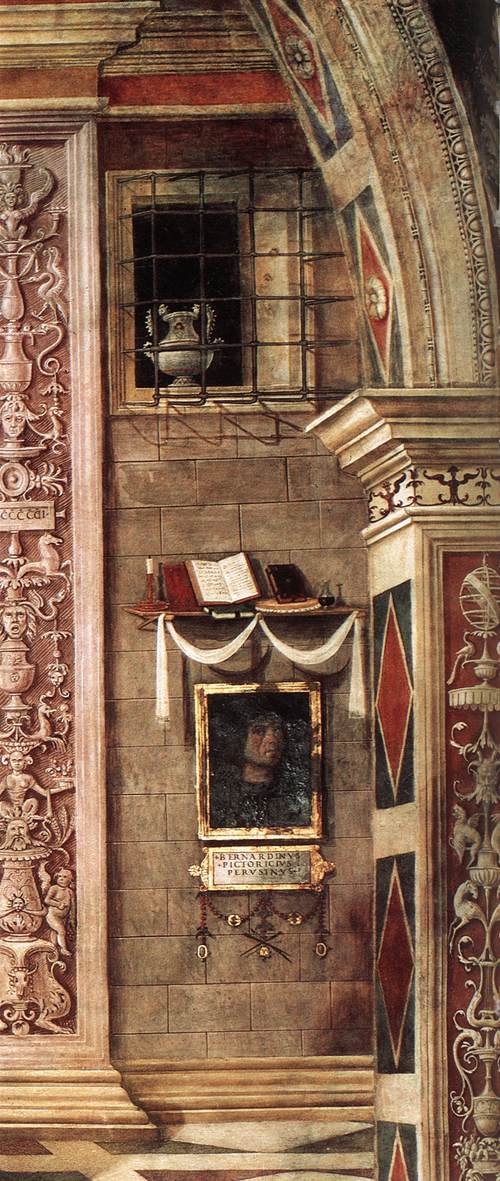Bernardino di Betto (Benedetto), Italian painter called II Pinturicchio, was, like Perugino, a native of the district around Perugia and consequently open to the artistic currents common to the Umbrian region. His training and early career are completely unknown; even his date of birth is a matter of speculation. Usually considered to have been born around 1454 on the basis of ambiguous data given by Vasari, he was more likely born a few years later. He was thought by his contemporaries to have been a pupil of Perugino and to have had a share in Perugino's frescoes in the Sistine Chapel in the early 1480s. Critics have also assigned to him several paintings of a series depicting events in the life of St Bernardino of Siena (Pinacoteca, Perugia), firmly datable to around 1473. This attribution is impossible on chronological grounds if the correct date of his birth is about 1460.
The first actual notice for Pinturicchio is his inscription in the painters' guild in Perugia in 1481. There is another Perugian notice of 1481 concerning a work no longer extant. In the following year he received payments for a lunette in the Palazzo dei Priori in Perugia, his first securely datable work, although it is modest and uninformative stylistically.
The important frescoes for the Bufalini family in the Roman church of Santa Maria in Aracoeli are not documented, but may date from the late 1480s. They were produced for an Umbrian patron from Citta di Castello and depict scenes from the life of St Bernardino. Only with the decorations of the so-called Borgia apartments in the Vatican Palace, made for the Borgia Pope Alexander VI (1492-1503) soon after the Pope took office and probably finished by 1495, do we have another firmly dated work.
In 1492 Pinturicchio was frescoing in the Cathedral of Orvieto (works no longer extant), where he was active over the next few years. By the 1490s, then, his life and work are more thoroughly traceable. In 1501 he frescoed the Baglioni Chapel in Santa Maria Maggiore in his native town of Spello; in that year he also held political office in Perugia. By 1502 Pinturicchio had obtained the commission to fresco the Piccolomini Library, a large appendage to the Sienese Cathedral. The actual painting took place between 1505 and 1507.
There are a few surviving easel paintings by Pinturicchio in various museums like The Crucifixion in the Borghese Gallery, Rome.
In Siena - where he finally settled, married, had children, and died - he had other important commissions for the Cathedral, for the Church of San Francesco, and for Pandolfo Petrucci, the chief citizen of the city. Throughout his life, Pinturicchio was never recorded in Florence. Although we might easily assume a brief trip or trips there, a sympathy for the progressive art occurring in the Tuscan capital is completely absent from his work. In this respect, he is unlike other leading Umbrian painters, such as Piero della Francesca, Perugino, Signorelli, and Raphael, who were open to such influences.
//
![]()









